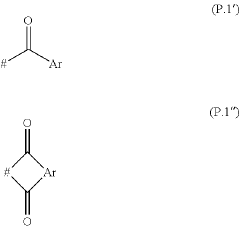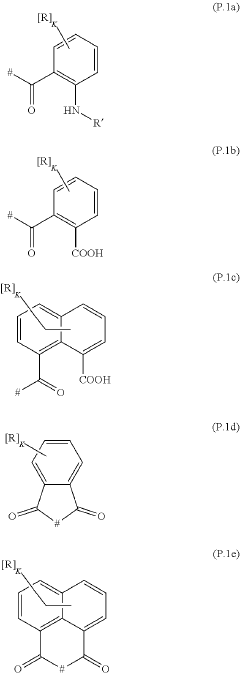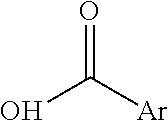Research on the application of polymer-based dispersants - Eureka
OCT 8, 20243 MIN READ
Generate Your Research Report Instantly with AI Agent
Patsnap Eureka helps you evaluate technical feasibility & market potential.
Polymer Dispersants Background and Objectives
The primary objective is to provide a comprehensive overview of the development history and technological evolution trends in the field of polymer-based dispersants. This section will delve into the key milestones and breakthroughs that have shaped the progress of this technology, shedding light on the driving forces behind its advancements. Additionally, it will clearly define the expected technological goals and targets that researchers and industry players aim to achieve through continued innovation and exploration in this domain.
By establishing a solid understanding of the historical context and future aspirations, this section lays the foundation for a deeper analysis of the market demands, current technological landscape, and potential avenues for further advancements in the subsequent sections of the report.
By establishing a solid understanding of the historical context and future aspirations, this section lays the foundation for a deeper analysis of the market demands, current technological landscape, and potential avenues for further advancements in the subsequent sections of the report.
Market Demand for Polymer-Based Dispersants
- Growing Demand for Dispersants The market for polymer-based dispersants is expanding rapidly, driven by increasing demand from various industries such as paints, coatings, inks, and construction materials.
- Environmental Regulations Stringent environmental regulations and a shift towards eco-friendly products have fueled the demand for polymer-based dispersants, which are considered more environmentally friendly than traditional dispersants.
- Emerging Applications New applications for polymer-based dispersants are emerging in fields like agriculture, pharmaceuticals, and personal care products, further expanding the market potential.
- Cost-Effectiveness Polymer-based dispersants offer cost-effective solutions compared to traditional dispersants, making them attractive for cost-conscious industries.
- Regional Market Dynamics The Asia-Pacific region is expected to witness significant growth in the polymer-based dispersants market due to rapid industrialization and increasing construction activities.
Current State and Challenges of Polymer Dispersants
- Current Challenges
Polymer dispersants face several challenges, including:- Limited compatibility with diverse systems
- Insufficient dispersion stability over time
- Environmental concerns and regulatory restrictions
- Technical Bottlenecks
Key technical bottlenecks hindering polymer dispersant development include:- Lack of understanding of polymer-particle interactions
- Difficulty in controlling polymer architecture and composition
- Inadequate characterization techniques for dispersant performance
- Geographic Distribution
Polymer dispersant technology is primarily concentrated in:- North America and Europe (advanced research and development)
- Asia-Pacific region (growing demand and manufacturing capabilities)
Key Players in Polymer Dispersant Industry
The competitive landscape for the application of polymer-based dispersants is characterized by a mix of established chemical companies and research institutions. The industry is in a mature stage with significant market size, driven by demand in sectors like coatings, oilfield solutions, and personal care.
BASF AB
Technical Solution: BASF AB develops polymer-based dispersants for coatings, adhesives, and sealants, enhancing dispersion stability and viscosity control.
Strength: High stability and performance. Weakness: Higher cost.
Lubrizol Advanced Materials, Inc.
Technical Solution: Lubrizol offers dispersants for pigments and fillers in coatings and inks, providing excellent color development and gloss.
Strength: Excellent color development and gloss. Weakness: Limited non-coating applications.
Core Innovations in Polymer Dispersants
Polyalkyleneimine-based polymers containing polyether chains
PatentPendingUS20220411582A1
Innovation
- The use of polymers that contain a polyalkyleneimine backbone, at least one aromatic moiety, and at least one aliphatic polyether moiety. these dispersants have improved pigment affinity, resulting in improved rheology behavior, such as viscosity at a given shear rate and gloss and finishing of the surface coatings. they can be used in both solvent-based and water-based systems.
Regulatory Landscape for Polymer Dispersants
Polymer-based dispersants are widely used in various industries, such as paints, coatings, inks, and ceramics, to improve the stability and dispersion of pigments and fillers. The market demand for these dispersants is driven by the growing need for high-performance and environmentally friendly products. The current technology landscape is dominated by traditional dispersants like polyacrylates and polycarboxylates, but there is a growing interest in developing more sustainable and efficient alternatives. Key players in this field include multinational chemical companies and specialized dispersant manufacturers. Potential innovation directions include the development of bio-based dispersants, smart dispersants with stimuli-responsive properties, and the integration of dispersants with other functional additives for enhanced performance.
Environmental Impact of Polymer Dispersants
Polymer-based dispersants are widely used in various industries, such as paints, coatings, inks, and ceramics, to improve the dispersion and stability of pigments and fillers in liquid media. The market demand for these dispersants is driven by the growing need for high-performance and environmentally friendly products. The current technology landscape is dominated by traditional dispersants like polyacrylates and polycarboxylates, but there is a growing interest in developing more sustainable and efficient alternatives. Key challenges include improving compatibility, reducing environmental impact, and enhancing performance under diverse conditions. Potential innovation directions involve exploring bio-based and biodegradable polymers, incorporating functional groups for targeted interactions, and developing smart dispersants responsive to external stimuli.
Unlock deeper insights with Patsnap Eureka Quick Research — get a full tech report to explore trends and direct your research. Try now!
Generate Your Research Report Instantly with AI Agent
Supercharge your innovation with Patsnap Eureka AI Agent Platform!



